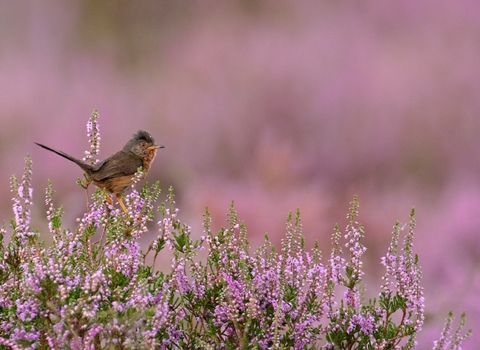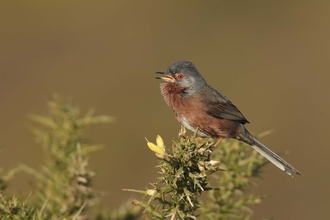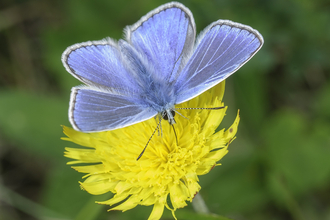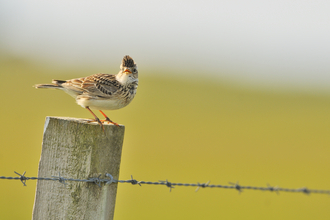Dartford warbler
A perky character, the Dartford warbler is slate-grey above and deep wine-red below. Its long tail is often held cocked at a jaunty angle while it sings its scratchy, rambling song from a perch on the top of a gorse bush. As well as being the perfect singing platform, this tightly packed, spikey shrub provides a safe nesting place and hunting ground for a bird that specialises in picking spiders and caterpillars from their hiding places.
A warm, still day is best, as little birds tend to stay hidden if it’s windy.
Where to see a Dartford warbler
Named after Dartford in Kent, near to which it was first noted as a breeding bird in 1773, the Dartford warbler is a bird of lowland heathland in the south east of England and south Wales. Look out for them at the locations listed below:
- Berkshire, Greenham Common (see Dartford warblers singing in the heath around former nuclear bunkers)
- Channel Islands, Alderney
- Devon, Bovey Heathfield, Chudleigh Knighton Heath
- Dorset, Higher Hyde Heath, Lytchett Bay, Tadnoll and Winfrith, Upton Heath
- Norfolk, Roydon Common and Grimston Warren
- Suffolk, Blaxhall Common
- Surrey, Brentmoor Heath, Chobham Common, Wisley and Ockham Commons
What to look for
As well as listening out for the rattling song, pay attention to the other birds around you. Dartford warblers have a habit of following stonechats around, so if you see a stonechat, check out the bushes around and below it. You may find a Dartford warbler quietly picking off insects nearby. Unusually for a warbler, this is a resident bird, staying in the UK through the winter. This isn’t always such a good strategy, as many birds have died during the hard winters of recent years.
If you can't get to these places
Try looking out for a close relative of the Dartford warbler, the whitethroat which has a similar liking for gorse bushes, as well as hawthorn hedges and other spiny bushes: the whitethroat can be found throughout the country, so you shouldn’t have to go far to find one.
More wildlife experiences
From seeing colourful wildflowers to spotting magnificent birds of prey, we can help you get closer to wildlife across the UK.








